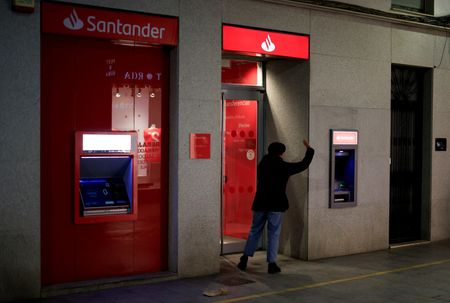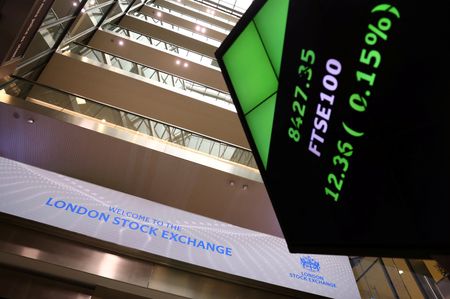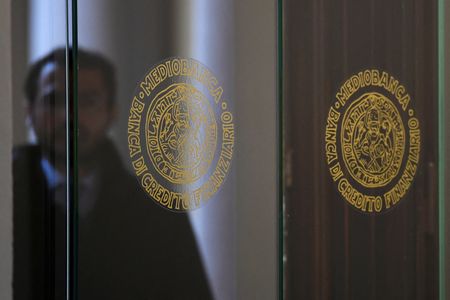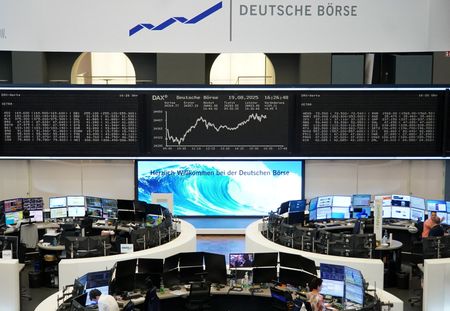By Jesús Aguado
MADRID (Reuters) -Santander on Wednesday announced 10 billion euros ($10.40 billion) in share buybacks for 2025 and 2026 and forecast higher profitability on the back of stronger growth in its U.S. consumer unit and efficiency gains.
With the Spanish lender also reporting record quarterly and full-year profits, its shares were up more than 7% by 0931 GMT.
European banks have been handing back record sums – on course for 120 billion euros last year – to investors through buybacks and dividends after higher interest rates fuelled a run of record profits.
Santander had lagged rivals such as BBVA in prioritising shareholder payouts, and its shares had underperformed its Spanish rival until recently.
On Wednesday the bank announced a new share buyback programme of around 25% of the profit from the second half of 2024.
The bank’s fourth-quarter net profit rose 11% year-on-year to 3.27 billion euros, while full-year net profit rose 14% to 12.57 billion euros. Both figures topped analysts’ forecasts.
Higher earnings helped lift its return-on-tangible-equity ratio, a measure of profitability, to 16.3% at year-end from 16.2% in the first nine months. For 2025, it expected ROTE of more than 17%, compared to previous guidance of 15% to 17%.
Santander Chair Ana Botin said organic growth opportunities could arise in markets such as the U.S. if the “operating context improved”, as its consumer unit would benefit from a lower rates environment going forward.
Net profit in the U.S. more than tripled in the quarter, while lending income rose 2%.
COMMITTED TO THE UK
Botin also said the lender remained committed to the UK, after a person familiar with the matter said last month it was reviewing its British presence as part of a regular assessment of its major markets.
The bank’s UK unit improved profits in the fourth quarter, but return on equity remains far below Santander’s other markets.
Santander, like other lenders, has benefited from higher interest rates, but growth in its key Latin American markets has given it an edge over more Europe-dependent rivals. Revenues grew 8% in the year.
Barclays welcomed a “strong set of earnings, capital and strong forward guidance”.
The lender also raised its core tier-1 capital ratio to 13% for 2025 after improving its solvency to 12.8% by the end of 2024 from 12.5% as of September. Overall, the bank maintained an operating capital range of between 12% and 13%.
As part of the bank’s transformation towards a more digital and integrated model, the efficiency ratio improved to 41.8% in 2024 from 44.1% in 2023.
Its net interest income, a measure of earnings on loans minus deposit costs, rose 6.8% in the quarter to 11.99 billion euros, thanks to more favourable exchange rates applied in its hyperinflation accounting in Argentina.
Profit generated by the retail business, the biggest of its five global units, rose 26% year-on-year in the quarter, while net profit at its digital consumer bank fell 66% after provisions of 295 million pounds ($368.5 million) related to a probe in the UK.
Net profit in the quarter at its corporate and investment banking unit more than doubled from a year earlier.
In Spain net profit rose 79% in the quarter and NII was also up, while net profit in Brazil rose 32%.
($1 = 0.8004 pounds)
(Reporting by Jesús Aguado; additional reporting by Emma Pinedo; edited by Inti Landauro and Jan Harvey)










